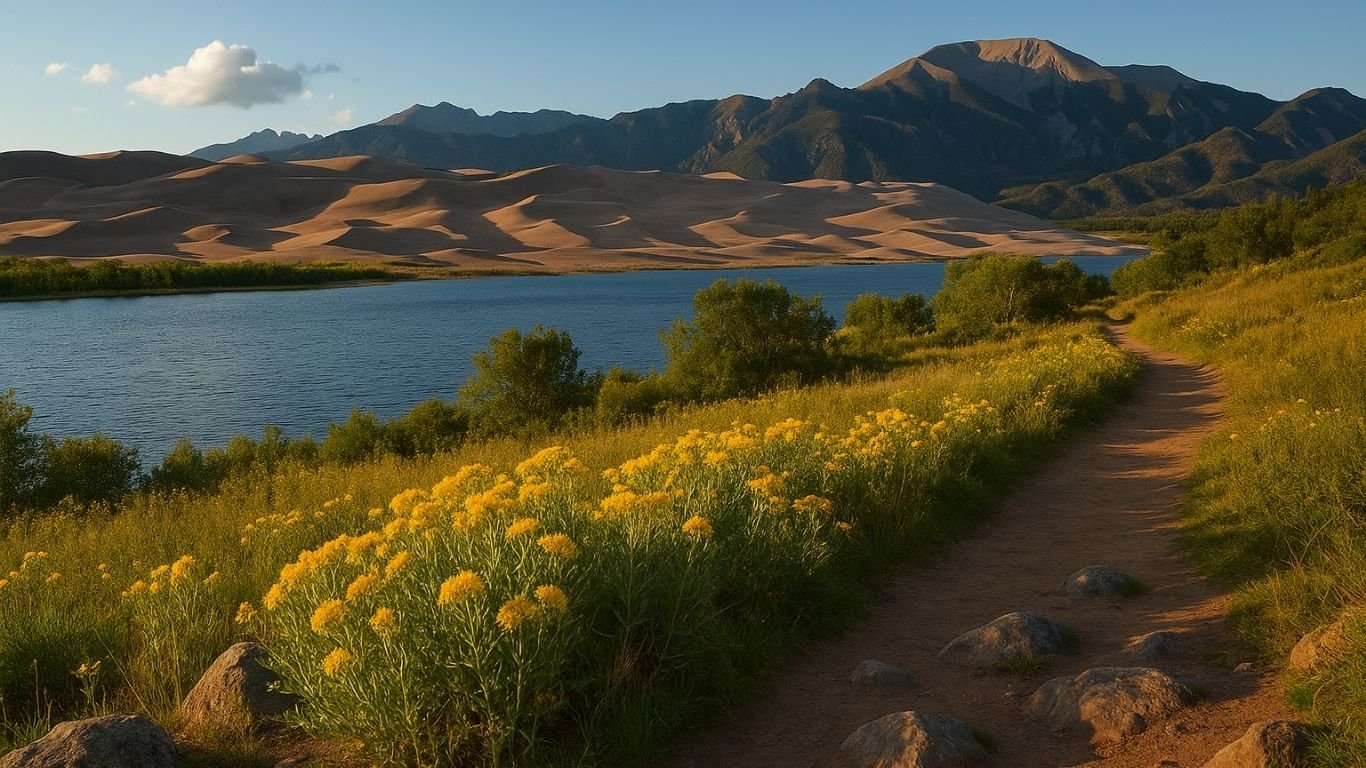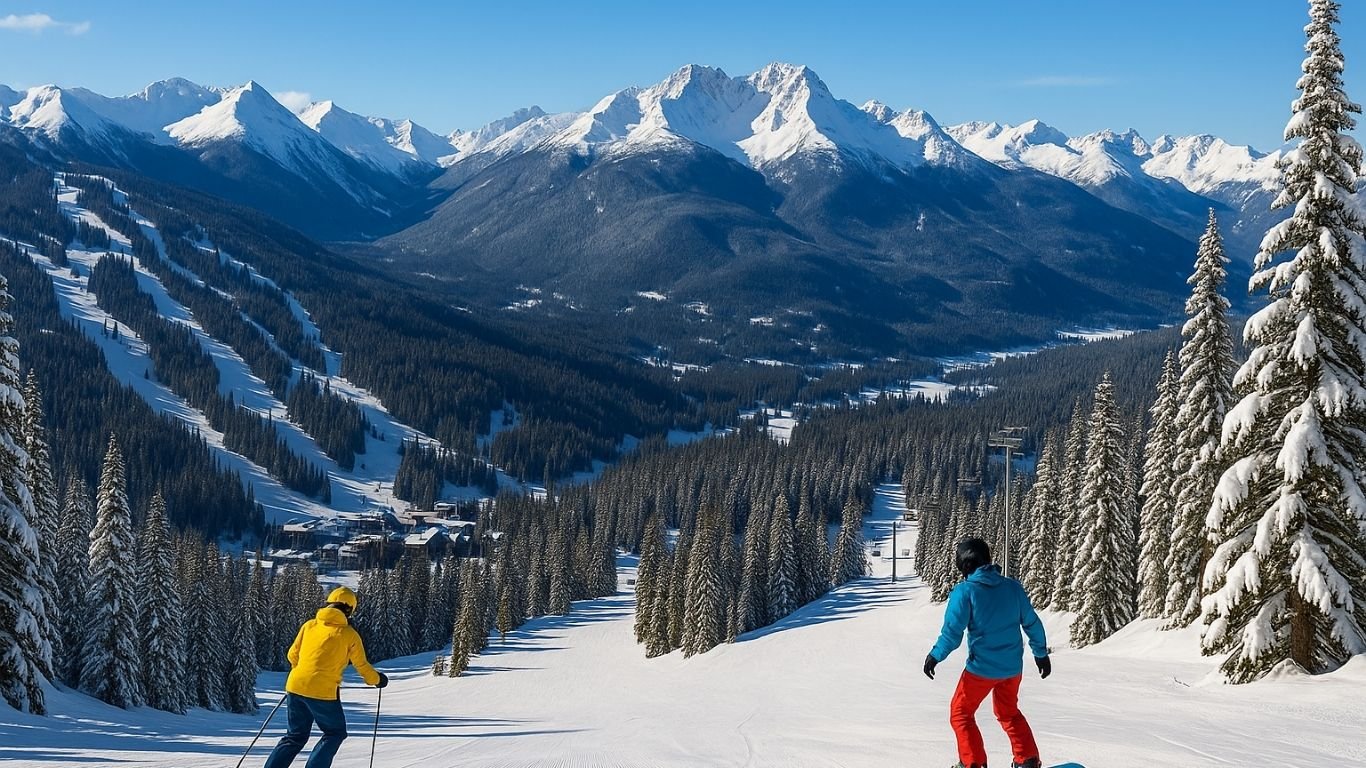In a world where iconic landmarks and tourist hotspots dominate travel itineraries, there lies a different kind of magic in the roads less traveled. While places like New York, Cancun, and Vancouver draw millions every year, a quieter North America whispers its secrets to those who care to listen. These are not the places you’ll see trending on Instagram or topping global “must-see” lists—but they’re every bit as rewarding.
This curated journey explores nine underrated destinations in North America that offer unforgettable experiences without the crowds. From glacier-sculpted trails in Wisconsin to Mayan ruins in the Yucatán and the cultural enclaves of Alberta, these locations invite deeper discovery and more personal connections.
Whether you’re a curious solo traveler, a family looking for a new kind of getaway, or a cultural enthusiast chasing authenticity, these underrated destinations in North America are where you’ll find substance over spectacle, charm over chaos, and soul over selfies.
Table of Contents
1. Tulsa, Oklahoma, USA

Discovering Tulsa’s Revival
Tulsa might not top most travel lists, but it quietly stands as one of the most compelling underrated destinations in North America. Once defined by oil wealth and economic boom, this Oklahoma gem has reshaped itself into a hub of art, history, and innovation. Downtown Tulsa has undergone a thoughtful revival, balancing Art Deco architecture with modern developments, creating an urban fabric that feels both historic and forward-looking.
Arts, Culture, and History
Tulsa’s cultural offerings are both diverse and deeply rooted. The Greenwood District—often referred to as Black Wall Street—holds profound historical significance. A stroll through its revitalized streets and memorials connects you to the resilience and entrepreneurship of the African American community that once thrived here. Institutions like the Greenwood Cultural Center and the John Hope Franklin Reconciliation Park ensure that these stories are never forgotten.
The Philbrook Museum of Art, housed in a 1920s Italian-style villa, blends fine art with stunning gardens. Meanwhile, the Woody Guthrie Center pays homage to the legendary folk musician whose lyrics gave voice to a generation.
Culinary Scene and Entertainment
Tulsa’s food scene punches well above its weight. Whether it’s elevated Southern cuisine, authentic tacos from locally owned joints, or inventive farm-to-table fare, the city offers a palate as varied as its people. The Tulsa Arts District buzzes with galleries, live music venues, and rooftop bars—creating an ideal evening atmosphere that’s energetic without being overcrowded.
One of the reasons Tulsa remains one of the most underrated destinations in North America is its ability to surprise. It doesn’t scream for attention—it rewards those who seek it out.
2. Moloka‘i, Hawaii, USA

Experiencing Authentic Hawaiian Culture
When travelers think of Hawaii, images of bustling Waikiki or luxury resorts on Maui often come to mind. But Moloka‘i—quiet, traditional, and wildly authentic—is one of the most soulful underrated destinations in North America. This island doesn’t cater to mass tourism. Instead, it offers something far more profound: a window into the heart of Hawaiian heritage.
Home to fewer than 8,000 residents, Moloka‘i embraces a way of life centered around community, sustainability, and cultural preservation. You won’t find big hotel chains here—instead, expect cozy guesthouses, farmers’ markets, and locals who greet you with true aloha.
Untouched Natural Beauty
Moloka‘i’s landscape feels almost otherworldly. Towering sea cliffs—the tallest in the world—drop dramatically into turquoise waters. The Halawa Valley, one of Hawaii’s oldest continuously inhabited places, offers guided hikes where you’ll learn about taro farming, legends, and ancient temples, ending at secluded waterfalls few ever reach.
Papohaku Beach, spanning nearly three miles, is one of the largest white sand beaches in the state—and it’s often empty. That solitude makes it a haven for reflection and barefoot strolls at sunset.
Respecting the Island’s Traditions
Traveling to Moloka‘i requires humility and respect. This island has actively resisted overtourism to protect its fragile culture. Visitors are encouraged to attend local events, support native-owned businesses, and approach experiences with open hearts and listening ears.
Moloka‘i’s strength lies in its stillness. It’s not just one of the most underrated destinations in North America—it’s one of the most emotionally moving. For those who want to connect rather than consume, Moloka‘i offers an unforgettable path.
3. John Day Region, Oregon, USA
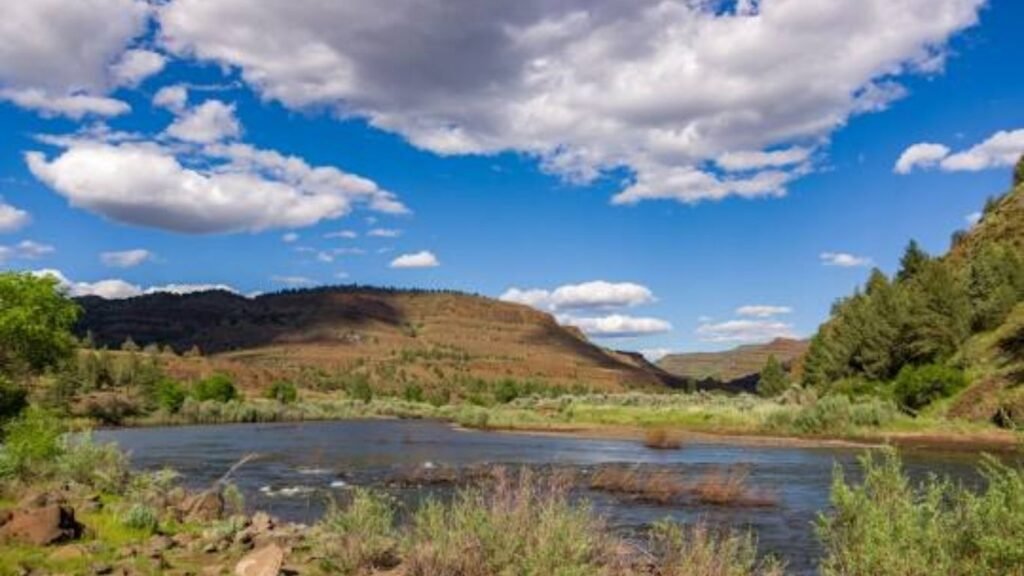
Exploring Ancient Landscapes
In the high desert of eastern Oregon lies a vast expanse of rugged beauty that few travelers ever encounter: the John Day region. Marked by ancient geology and wide-open skies, it’s a place where time seems frozen—and where nature’s artistry takes center stage. This captivating region is one of the most visually striking underrated destinations in North America, especially for those with a love of science, solitude, and the surreal.
At the heart of the region is the John Day Fossil Beds National Monument, an open-air museum of prehistoric life. With rock formations revealing millions of years of evolution, the area invites you to walk through epochs, not just trails.
Fossil Beds and Painted Hills
The Painted Hills are arguably the most iconic part of the John Day Fossil Beds. Their layered reds, yellows, and blacks are the result of shifting minerals over millions of years, creating a striped desert landscape that seems lifted from a dream. Trails like Painted Cove and Carroll Rim offer accessible, awe-inspiring views without the crowds often found in national parks.
Other units, such as the Clarno and Sheep Rock Units, boast fossilized plants, animals, and even rhino bones—unbelievable but true. Educational signage and interpretive centers provide just enough context to deepen your wonder without overwhelming the experience.
Outdoor Adventures and Wide-Open Spaces
Beyond its geological marvels, the John Day region is an outdoor lover’s paradise. Stargazing here is second to none due to minimal light pollution. Anglers and kayakers can enjoy the John Day River, while hikers can lose themselves in vast, empty trails surrounded by sagebrush and volcanic outcroppings.
Because of its remote location and lack of commercial tourism, the area remains one of the most peaceful and underrated destinations in North America—a perfect blend of science, silence, and staggering beauty.
4. Alamosa, Colorado, USA
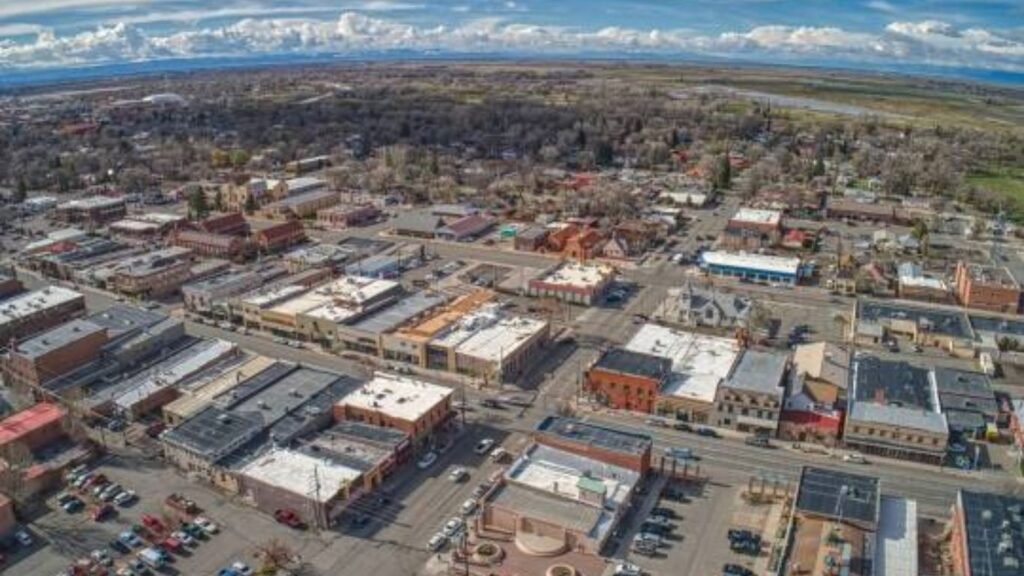
Gateway to the Great Sand Dunes
Nestled in the sweeping San Luis Valley, Alamosa is a quiet town that punches well above its weight when it comes to scenery, adventure, and cultural depth. It serves as the southern gateway to Great Sand Dunes National Park and Preserve, home to North America’s tallest dunes—a surreal landscape of golden waves beneath a backdrop of snowy peaks.
While many tourists flock to Colorado’s ski towns, Alamosa offers a dramatically different experience. It’s one of those underrated destinations in North America that rewards travelers who are looking for solitude, spiritual scenery, and a deeper connection to place.
San Luis Valley’s Natural Wonders
Beyond the dunes, the San Luis Valley is a sprawling basin bordered by the Sangre de Cristo and San Juan Mountains. This diverse ecosystem hosts wetlands, alpine forests, and hot springs. It’s also a stopover for thousands of sandhill cranes during their spring migration, attracting wildlife photographers and birders alike.
Zapata Falls—tucked into a rocky crevice—is another local gem. A short hike leads to a 30-foot waterfall that ices over in winter, creating a frozen cathedral-like chamber.
Rich History and Cultural Heritage
Alamosa is also steeped in cultural and historical richness. Indigenous peoples lived in the San Luis Valley for thousands of years before Spanish explorers and settlers left their own legacy. Today, this layered history is preserved through sites like Fort Garland Museum and Cultural Center and the Rio Grande Scenic Railroad.
Festivals, farmers’ markets, and historic churches reflect the valley’s Hispanic roots. For those who want to explore the quiet power of the American Southwest, Alamosa remains one of the most overlooked and meaningful underrated destinations in North America.
5. Ice Age Trail, Wisconsin, USA

Hiking Through Glacial History
Winding over 1,200 miles through Wisconsin’s heartland, the Ice Age National Scenic Trail offers something few places can: a chance to walk the very path carved by glaciers more than 12,000 years ago. This geological marvel is not just for avid thru-hikers. It’s for anyone seeking solitude, scenic variety, and a walk through ancient history—making it one of the most immersive underrated destinations in North America.
The trail traces the terminal moraine of the last continental glacier, meaning every ridge, valley, and boulder tells a story of ice, time, and transformation. And unlike busier national park trails, this one invites personal space and quiet reflection.
Scenic Landscapes and Diverse Ecosystems
As you traverse the Ice Age Trail, you’ll move through an ever-changing canvas of terrain: hardwood forests, quiet prairies, glacial lakes, and winding creeks. Each section offers a different mood. The Devil’s Lake segment brings dramatic rock formations and ridgeline views, while the Kettle Moraine State Forest showcases rolling hills dotted with rare kettle ponds.
In spring, the trail bursts into bloom with native wildflowers. Autumn transforms it into a corridor of gold and crimson. And in every season, wildlife sightings are common—think sandhill cranes, white-tailed deer, and even the occasional black bear.
Planning Your Ice Age Trail Adventure
The trail is broken into accessible segments, which makes it beginner-friendly. Whether you’re aiming for a full thru-hike or just a few scenic miles, the Ice Age Trail Alliance offers detailed maps, local trail communities, and volunteer-led events to help guide your journey.
Few places offer such a deep connection to geological time while still remaining under the radar. As far as underrated destinations in North America go, the Ice Age Trail is a true natural treasure—one you can discover at your own pace, step by ancient step.
6. Coastal Alabama, USA
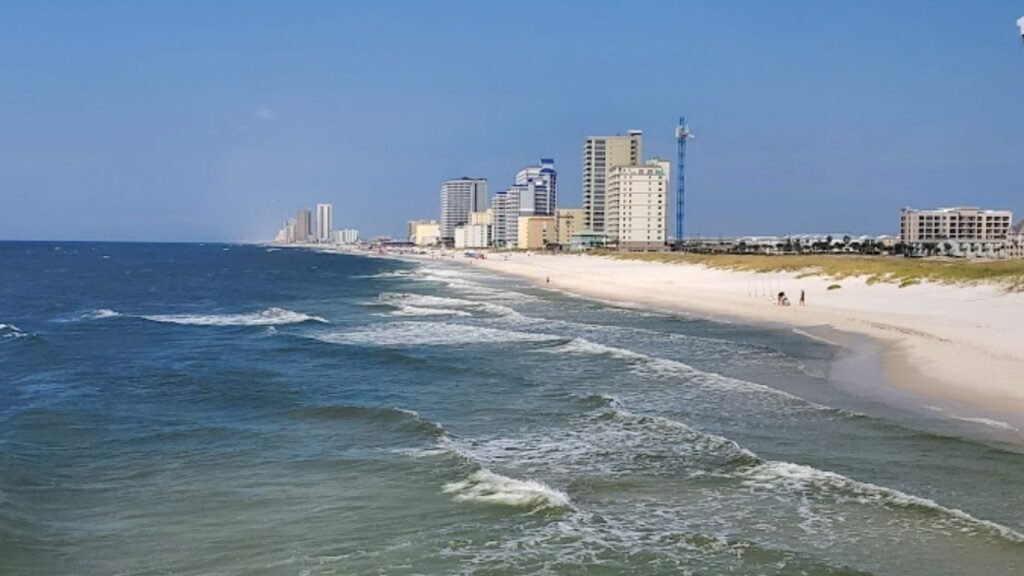
Beyond the Beaches: Exploring the Coast
When people think of American coasts, their minds often wander to California’s cliffs or Florida’s beaches. Yet tucked along the Gulf of Mexico lies a quieter stretch of shoreline that many travelers overlook: Coastal Alabama. With its blend of history, culture, and ecological richness, this region stands tall among the most underrated destinations in North America.
While its beaches—like those in Gulf Shores and Orange Beach—are pristine and uncrowded, the real charm of Coastal Alabama lies in the experience beyond the sand. Think maritime history, small-town hospitality, and wild wetlands that hum with biodiversity.
History, Culture, and Seafood
Mobile, one of Alabama’s oldest cities, is a history lover’s dream. It’s the original home of Mardi Gras in the United States and features antebellum architecture, cobblestone streets, and vibrant museums. Fort Morgan and Fort Gaines offer immersive Civil War experiences, while local tours highlight the region’s multicultural heritage—French, Spanish, Creole, and African-American influences all play a part.
And the food? Seafood reigns supreme. From oyster bars on the causeway to hole-in-the-wall crab shacks, every meal feels like a celebration of the Gulf’s bounty. Try the West Indies Salad, a Mobile-born dish featuring marinated lump crab meat—it’s a regional classic.
Nature Preserves and Outdoor Activities
For nature lovers, the area is laced with protected spaces. The Bon Secour National Wildlife Refuge is a haven for migratory birds and endangered sea turtles. Kayakers paddle through cypress swamps and bayous, and nature trails wind through longleaf pine forests and coastal dunes.
Coastal Alabama may not draw the same crowds as better-known spots, but that’s precisely what makes it one of the best underrated destinations in North America. It invites you to slow down, savor, and stay awhile.
7. “Ukrainian Bloc,” Alberta, Canada

Exploring Ukrainian Heritage in Canada
East-central Alberta is home to one of the most unexpected and culturally rich underrated destinations in North America. Known informally as the “Ukrainian Bloc,” this region was settled by Ukrainian immigrants in the late 19th and early 20th centuries. Their legacy lives on not just in names and landmarks, but in daily life, festivals, architecture, and food.
Towns like Vegreville, Mundare, and Lamont are steeped in Slavic tradition. Orthodox churches with shimmering domes rise over prairie fields, and hand-painted signs in Cyrillic script still adorn community halls and bakeries. These aren’t tourist simulations—they’re living, breathing communities preserving a proud heritage.
Cultural Experiences and Festivals
One of the most beloved events in the region is the Vegreville Ukrainian Pysanka Festival, a vibrant summer celebration of folk dance, embroidery, storytelling, and music. It’s also where you’ll find the iconic Vegreville pysanka—an enormous decorative Easter egg that has become a symbol of cultural pride.
Year-round, visitors can explore the Ukrainian Cultural Heritage Village, an open-air museum where costumed interpreters re-create life in a 1900s pioneer settlement. You can learn to bake paska bread in traditional clay ovens, watch blacksmiths at work, or chat with local farmers about their ancestral roots.
Food is another gateway to this culture. Home-cooked perogies, kielbasa, and cabbage rolls are served everywhere from town diners to family-run roadside stands. The warmth of hospitality here is unmatched—visitors are treated like neighbors, not outsiders.
Prairie Landscapes and Communities
The landscape surrounding the Ukrainian Bloc is as humble as it is beautiful: rolling fields of wheat and canola stretch to the horizon, interrupted only by blue lakes and rustic grain elevators. The pace of life is slower here, and that’s precisely its charm.
What elevates this region into one of the most compelling underrated destinations in North America is how seamlessly history and daily life intertwine. It’s a deeply rooted, proudly preserved culture just waiting to be discovered.
8. Ruta Puuc, Yucatán, Mexico

Uncovering Ancient Mayan Cities
In the Yucatán Peninsula, south of Mérida and far from the crowds of Cancún, lies a series of ancient Mayan cities that few travelers ever reach. The Ruta Puuc—a name derived from the Mayan word for “hills”—is a loosely connected archaeological route that threads together Uxmal, Kabah, Sayil, Labná, and other smaller sites. These ruins are more intimate, less commercialized, and far more tranquil than their high-profile counterparts, making this route one of the most enriching underrated destinations in North America.
The Puuc region represents a pinnacle of Mayan architectural finesse. Uxmal, the centerpiece of the route, showcases the Puuc style: intricate stone mosaics, curved pyramid sides, and complex astronomical alignment. Walking these ruins feels like a private audience with a long-lost civilization.
Architectural Wonders and History
Each city on the Ruta Puuc offers its own flavor of discovery. Kabah is known for the Palace of the Masks, featuring hundreds of stone faces dedicated to the rain god Chaac. Labná features a ceremonial arch that’s as graceful as it is historically significant.
Unlike larger sites, these ruins allow visitors to move freely and explore at their own pace. The peacefulness enhances the sense of wonder—there are moments where you’ll feel like you’ve stepped into a forgotten world. Interpretive signage is available, but local guides can offer even deeper context, including legends, astronomy, and ceremonial significance.
Exploring the Yucatán Peninsula
After touring the ruins, travelers can immerse themselves in the Yucatán’s vibrant living culture. Stay in restored colonial haciendas or locally owned eco-lodges. Savor regional dishes like cochinita pibil and panuchos in small village eateries. And cool off in hidden cenotes—limestone sinkholes filled with crystal-clear water that once served sacred roles in Mayan belief.
Ruta Puuc is not just a history lesson—it’s a complete experience. It invites you to slow down, listen to the stones, and embrace the silence. As far as underrated destinations in North America go, few are as mystical, immersive, or rewarding.
9. Churchill, Manitoba, Canada
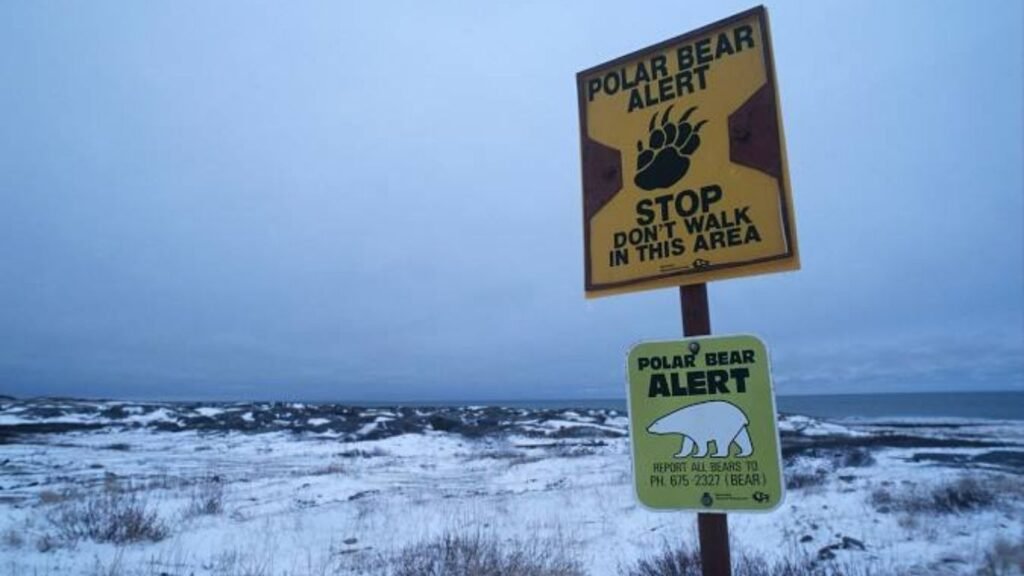
The Polar Bear Capital of the World
Perched on the shores of Hudson Bay, Churchill is one of those rare places where nature dictates the rhythm of life. Known globally for its polar bear population, this small Canadian town offers front-row seats to one of Earth’s most majestic wildlife spectacles. Despite its unmatched Arctic allure, Churchill remains one of the least-visited yet most fascinating underrated destinations in North America.
Every fall, hundreds of polar bears migrate through the area, waiting for the bay to freeze so they can hunt on the ice. Specialized tundra vehicles and local guides allow travelers to safely and respectfully view these incredible predators in the wild—no zoos, no fences, just raw, untouched wilderness.
Beluga Whale Watching
But Churchill isn’t a one-season wonder. In summer, the Churchill River estuary welcomes thousands of beluga whales. These sociable, vocal marine mammals are often visible from kayaks, boats, and even snorkeling excursions. Their curiosity brings them close to humans, offering an experience as joyful as it is humbling.
This seasonal duality—polar bears in fall, belugas in summer—makes Churchill an ecological marvel. Add in more than 270 bird species, and it’s easy to see why this Arctic outpost is a dream for wildlife lovers.
Northern Lights and Arctic Experiences
Churchill also sits directly beneath the auroral oval, making it one of the best places in the world to witness the northern lights. From late August through April, the skies often erupt in shimmering waves of green, purple, and gold—no filters, no crowds, just you and the cosmos.
The cultural landscape is equally captivating. Churchill’s Indigenous communities—particularly the Dene and Inuit peoples—have shaped the area for centuries. Museums, local art galleries, and cultural talks offer insight into their traditions, survival skills, and spiritual connection to the land.
What makes Churchill stand out among other underrated destinations in North America is its sheer rawness. It’s a place where nature, not humans, sets the tone. And for those willing to journey to its icy edges, it promises not just a trip—but a transformation.
Conclusion
In a world increasingly saturated with over-tourism and Insta-famous hotspots, the most meaningful travel experiences are often found off the beaten path. The destinations we’ve explored—from the frozen tundra of Churchill to the glacial ridges of Wisconsin and the timeworn ruins of the Yucatán—reveal a side of the continent that many overlook.
These underrated destinations in North America don’t compete for attention. Instead, they invite curiosity. They whisper stories rather than shout, offer space instead of spectacle, and prioritize authenticity over polish. Whether it’s the soulful traditions of Moloka‘i, the cultural resilience of Alberta’s Ukrainian Bloc, or the raw wildness of Colorado’s dunes, each destination gives more than it takes.
For the traveler who values connection, discovery, and depth, these places are more than just pins on a map. They’re reminders that travel is not about ticking boxes—it’s about finding places that resonate, surprise, and inspire.
So skip the crowds. Choose intention over impulse. And go where the world still feels wide open.
FAQ
What makes a destination “underrated”?
An underrated destination is one that offers unique cultural, natural, or historical value but doesn’t receive the recognition or tourist volume it deserves. These places often provide a more authentic, immersive experience with fewer crowds and more opportunities for meaningful travel.
Are these places safe for travelers?
Yes—most of the underrated destinations in North America featured in this guide are not only safe but welcoming. As always, basic precautions and local awareness apply, especially in remote or wilderness areas like Churchill or the Ice Age Trail. Local tourism offices and guides can be valuable resources.
What’s the best time of year to visit these destinations?
It depends on what you’re seeking:
- Churchill: Visit in October–November for polar bears, or July–August for beluga whales.
- Moloka‘i: Enjoyable year-round, though spring and fall see fewer visitors.
- Ruta Puuc: November–April offers dry weather and comfortable temperatures.
- Alamosa: Late spring through early fall is ideal for hiking and wildlife.
- Coastal Alabama: Fall and early spring provide mild weather and vibrant festivals.
Each location offers something special in different seasons—research accordingly.
Why choose these spots over popular tourist areas?
The charm of underrated destinations in North America lies in their authenticity. Instead of long lines, overdeveloped attractions, or inflated prices, you get genuine hospitality, natural beauty, and space to explore. These places allow travelers to slow down and connect deeply with both land and people.
How can I travel responsibly in lesser-known areas?
Traveling responsibly means respecting local cultures, minimizing environmental impact, and supporting local economies. Stay in locally owned accommodations, avoid overtourism practices, and learn about regional customs. Many of these destinations have preserved their identity precisely because travelers tread lightly—let’s keep it that way.
10 National Parks You Didn’t Know You Should Visit – National Geographic